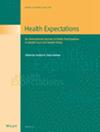Considerable changes in primary outpatient healthcare can be expected in the coming years due to various trends observed in Western countries, such as an ageing population, an increasing number of patients with chronic illnesses, GP shortages, a trend towards patient-centred care and the digitalization of healthcare. Knowing the population's preferences and subgroup preferences in these developments helps policymakers make healthcare delivery more responsive to patients' needs.
Primary data were collected using a representative sample of the adult Swiss population in the fall of 2020. Discrete Choice Experiments (DCEs) were conducted, where one of the DCEs included an acute health problem and another a routine examination. In the survey, respondents were shown five different choice tasks, each containing two hypothetical alternatives for primary outpatient healthcare models. They were asked to choose their preferred alternative for each choice task. The DCEs enabled the measurement of the population's preferences for nine attributes of primary outpatient healthcare that are currently under discussion (e.g., task shifting, new technology in healthcare and shared decision-making). The data were analysed using panel latent class logit models (LCA) to determine preference heterogeneity and relative importance scores for the attributes.
Data from 4745 respondents were included in the analysis. The LCA indicated two classes for acute health problem and three classes for routine examination, with varying latent preference structures. Both DCEs showed similar preference patterns: for one class with younger and more educated respondents, health insurance premium development was most important, followed by participation in decision-making, whereas having a doctor as the health professional was less important. Another class with older and less educated people attached more importance to personal continuity of care and the health professionals being a medical doctor.
Younger and more highly educated people are more open to current developments in outpatient primary healthcare, such as task shifting, than older and less educated people, especially if this reduces their health insurance premiums in return.
The public was involved in the design of the DCE and as the respondents of the survey used in this article.



